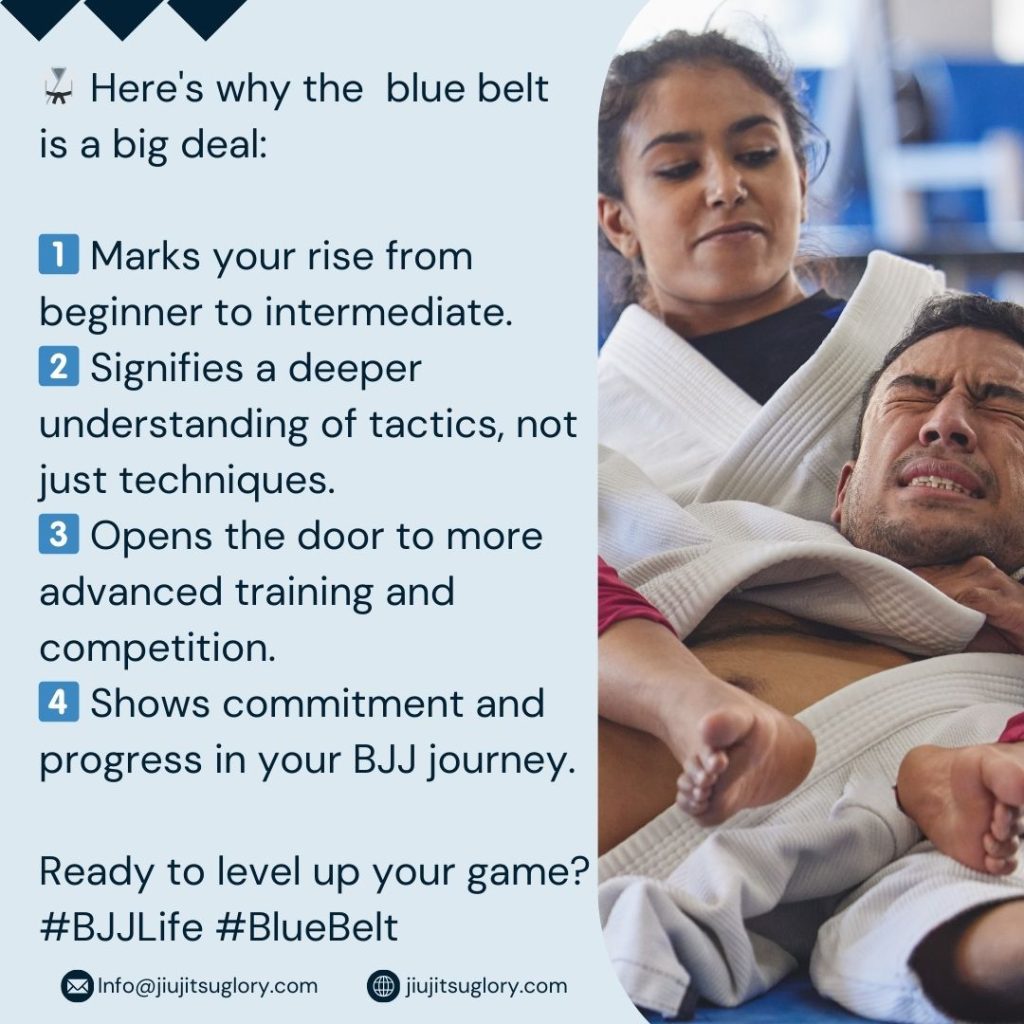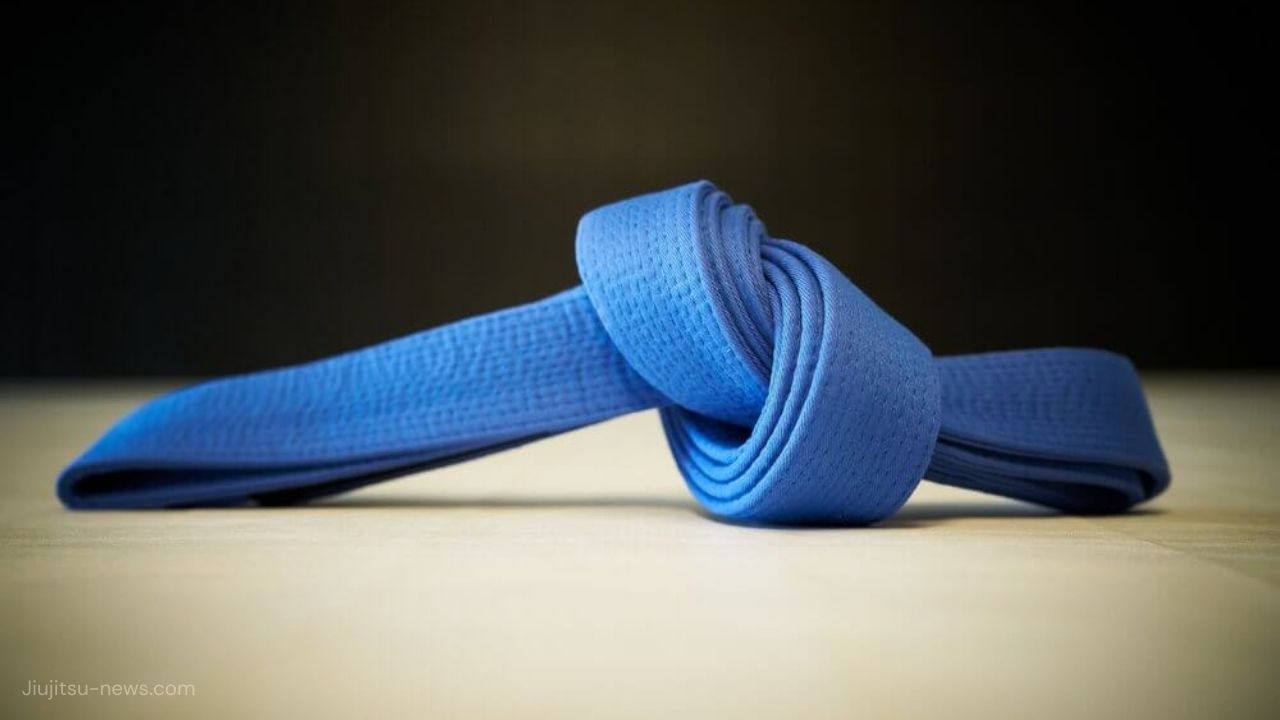Imagine! You just put on your brand-new blue belt, and it feels good, does it not? What does it mean in the big picture of Brazilian Jiu-Jitsu, though?
It is not just cool to have a new color; it is important. You have moved up from a beginner to someone who is getting the hang of this difficult martial art.
Let us talk about what it takes to get a blue belt, the problems you might face, and how it helps you improve your BJJ.
Brazilian Jiu-Jitsu Blue Belt Meaning

In Brazilian jiu-jitsu, the blue belt is the second-color belt. Many people think this rank changes everything.
Becoming a blue belt is the first big step in the world of Brazilian Jiu-Jitsu. It is the same as moving from the beginner level to the intermediate level.
You are now learning how to play chess with your body instead of just moves. This is the point where you take the sport very seriously.
How Long Does It Take to Get a Blue Belt in BJJ?
Want to know how long it takes to get your blue belt in Brazilian Jiu-Jitsu?
There is not a single answer that works for everyone, but in general, it takes about two to three years.
In that case, you should train regularly, like hitting the mats three times a week.
Why Does it Take So Long to Get a Blue Belt in Brazilian Jiu-Jitsu?
Learning a lot of different moves and getting good at using them when you are rolling is what BJJ is all about.
Not only should you learn the moves, but you should also be able to do them naturally when sparring.
If someone has done other martial arts before or just takes to the mats like a fish to water, they might get through it faster.
But do not forget that BJJ is more of a marathon than a sprint. Not just getting belts, it is about really learning.
You will get that blue belt before you know it if you keep going and rolling. Besides, being steady is important in this game!
BJJ Blue Belt Requirements and Training
Want to know what it takes to get a blue belt in Brazilian Jiu-Jitsu? Putting in a lot of time on the mat is important, but it is not the only thing.
You will need to work on your skills and get good training in order to make the cut.
Next, you need to be willing to put in time: most people need about two to three years of training, with sessions about three times a week. This amount of time will make sure that you do not just learn the techniques, but really understand them.
Getting good at a few basic BJJ moves is important for your overall fitness. Guards, escapes, submissions, and control positions are all part of this.
You’ll be expected to demonstrate these techniques effectively during sparring, showing you can handle real-life grappling scenarios, not just textbook executions.
Consistency is key in your training. Regularly attending classes and actively engaging in rolling sessions are crucial. This helps you iron out the kinks in your techniques and build muscle memory.
Plus, the more you roll, the better you understand how to adapt techniques in live situations.
Remember, every gym might have slightly different criteria, but the essence remains the same: show up, train hard, and master those fundamental skills.
Overcoming Challenges on the Way to the BJJ Blue Belt
Navigating the journey toward the BJJ blue belt means facing down both physical and mental hurdles.
Here’s how you can overcome these challenges and stay on track.
- Physical challenges: As you dive deeper into BJJ, the complexity of techniques increases significantly. Feeling stuck occasionally is part of the process. To push through, make drilling a habit.
- Mental toughness: There will be days when your body or mind balk at the idea of training. It’s crucial to cultivate mental resilience to push through these moments.
- Ego checks: One of the biggest hurdles in BJJ is managing your ego. Keeping your ego in check helps you stay open to learning and improving, rather than getting hung up on who you think you should be beating.
- Embrace the learning curve: Use every sparring session as a learning opportunity. If you find yourself in a tough spot, ask for feedback, and apply what you learn.
Overcoming these challenges is about more than just earning a belt—it’s about evolving as a practitioner and enjoying your BJJ journey. Stay committed, stay curious, and the skills will follow.
Blue Belt to Purple Belt: What to Expect?
Thinking about purple yet? That’s where things get even deeper.
You’ll be refining your techniques and starting to personalize your grappling style. It’s about finesse and strategy more than just brute force.
Be ready to dive deep into the mental side of BJJ and start setting some long-term goals.
Conclusion
Getting that blue belt is just the beginning. It sets you up for the real deep dive into Brazilian Jiu-Jitsu that happens at higher levels.
Stay focused, train hard, and enjoy every minute on the mat.



